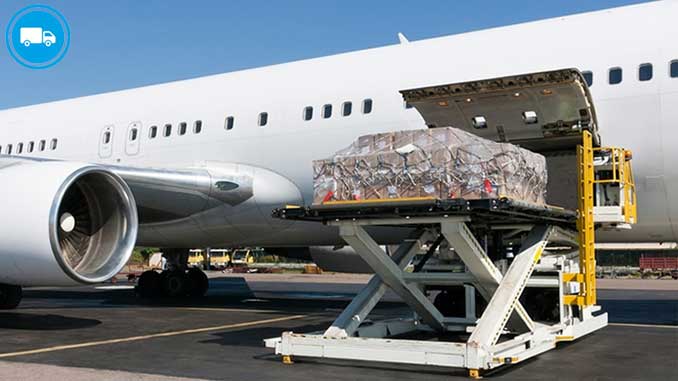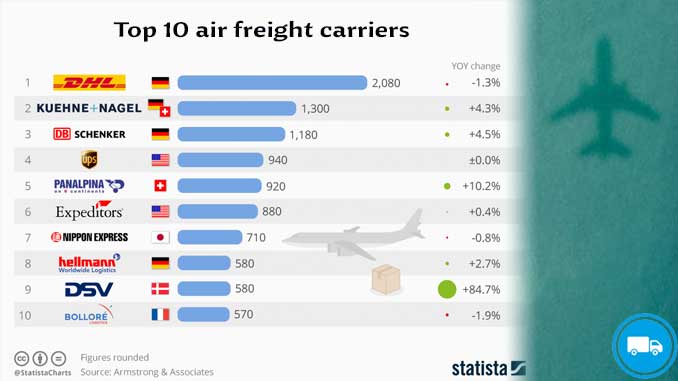Air Cargo transportation
Air cargo, commonly known as air freight, is collected by firms from shippers and delivered to customers. Aircraft were first used for carrying mail as cargo in 1911. Eventually manufacturers started designing aircraft for other types of freight as well.
There are many commercial aircraft suitable for carrying cargo such as the Boeing 747 and the bigger An‑124, which was purposely built for easy conversion into a cargo aircraft. Such large aircraft employ quick-loading containers known as unit load devices (ULDs), much like containerized cargo ships. The ULDs are located in the front section of the aircraft.
Most nations own and utilize large numbers of military cargo aircraft such as the C‑17 Globemaster III for logistical needs.
Popular commercial aircraft transformed to a cargo aircraft such as Saab 340A is designed for high revenue and profitability in short / medium haul operations.
Early years
The first cargo flight took place on the 7 November 1910 in the USA, between Dayton and Columbus, Ohio. Philip Orin Parmelee piloted a Wright Model B aeroplane 65 miles (105 km) carrying a package of 200 pounds of silk for the opening of a store. Newspaper clippings quoted the Wright brothers as stating he covered the distance in 66 minutes, but the flight was officially recorded at 57 minutes, a world speed record at the time. It was the first “cargo only” flight solely for the transport of goods; the first flight commissioned by a client, and the first example of multimodal air transport, since the pieces of silk were transported by car from Columbus aerodrome to the store.
The world’s first official airmail flight took place on 18 February 1911, at a large exhibition in the United Provinces of Agra and Oudh, British India. The organizer of the aviation display, Sir Walter Windham, was able to secure permission from the postmaster general in India to operate an airmail service in order to generate publicity for the exhibition and to raise money for charity. This first airmail flight was piloted by Henri Pequet, who flew 6,500 letters a distance of 13 km (8.1 mi), from Allahabad to Naini—the nearest station on the Bombay-Calcutta line to the exhibition. The aircraft used was a Humber-Sommer biplane with about fifty horsepower (37 kW), and it made the journey in thirteen minutes. The world’s first scheduled airmail post service took place in the United Kingdom between the London suburb of Hendon, and the Postmaster General’s office in Windsor, Berkshire, on September 9, 1911. It was part of the celebrations for King George V’s coronation and at the suggestion of Sir Walter Windham, who based his proposal on the successful experiment he had overseen in India. The service ran for just under a month, transporting 35 bags of mail in 16 flights.
In the early 20s, air cargo developed rapidly because numerous entrepreneurs realized aircraft could move high value and low volume consignments much faster than the railroads and shipping companies. The first scheduled flight from London to Paris in 1919 had only one passenger but carried leather for a shoe manufacturer and grouse for a restaurant. Cinema films were also a frequent consignment: original news’ bulletins were first carried to a central laboratory to make copies, and then distributed by air throughout Europe for their release in cinemas.
Modern Air Cargo
Despite widespread hopes for a vibrant industry, for decades the air freight did not grow as expected and remained a very small part of total air traffic. For much of the first five post-war decades most carriers saw it as a secondary activity, although there had always been specialized cargo airlines. Some passenger airlines have found the practice of carrying “belly cargo” a highly lucrative enterprise (in fact, it is estimated that 50% of all air freight is moved in this way), to the point where it has lessened the demand for dedicated large cargo aircraft.
Cargo emerged as a solid pillar of the industry in 1990s. The catalysts for the renewed growth in the sector were the express parcel carriers, typified by FedEx, DHL, TNT and UPS, and changes in practices in the manufacturing sector. In 1992, FedEx sent software on computer disks to thousands of customers, allowing them to track shipments from their own workstations.
The rise of internet during in the years that followed contributed to increase the reliability and accessibility to the air cargo industry. Most airlines now offer to their customers real-time flight status and the booking and tracking options. In addition, the industry is adopting electronic procedures, such as the electronic air waybill, to reduce the amount of paper documentation accompanying each shipment and increasing the security and safety of the transportation.
An industry expert estimates that 15-20 tonnes of air cargo is worth 30-40 economy passenger seats, when both are on passenger planes.
However, with the exception of the integrators (FedEx,UPS,DHL and TNT) the air cargo industry continues to suffer as the by-product ‘poor-relation’ of the passenger business.




